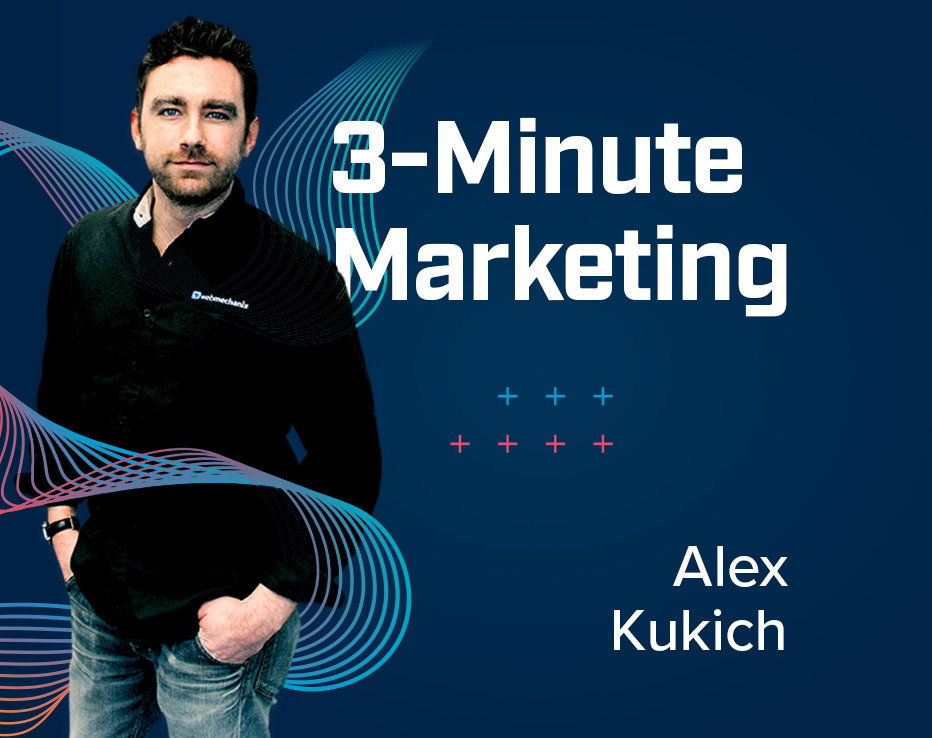
Mastering the Art of Scaling Paid Social Campaigns

Scaling paid social campaigns is one of the most challenging bottlenecks for any marketing team to overcome.
Tell me if this sounds familiar…
- You start advertising on a similar channel like Facebook (now Meta).
- After some optimization, you start seeing some pretty good results!
- You increase the budget to try to get more leads at the same cost… but that’s where everything falls apart. 🙁
If any of that resonates, here’s the truth…
Profitably scaling your Facebook Ads or other paid social channels requires a different set of strategies & tactics than those required to stand a campaign up.
In this article, we’re going to reveal exactly how we’ve been able to help our clients bust through their toughest paid social spending plateaus.
These strategies have helped some of our clients scale their social ad spend as much as 20X, well into the 7-figures per month – even in some of the most competitive and highly-regulated industries.
Let’s jump into the most effective methods and important considerations for scaling paid social campaigns, drawing on insights from our paid media experts.
Strategic Foundations for Scaling Paid Social Campaigns
Scaling involves strategically increasing the budget of successful campaigns to amplify their impact. To do so effectively, marketers must consider several factors:
- Time Frame: How quickly does the scale need to occur?
- Campaign Goals: Are you focusing on lead generation, brand awareness, or engagement?
- Budget: What budgets are available for scaling?
- Audience Size: Is the current audience large enough to support an increased spend without diminishing returns?
“Understanding the objective of your campaign, the value of conversion actions being driven, and the end goal you hope to achieve with scaling is paramount in effectively picking a scaling strategy that best fits your ROI model. There is no ‘one size fits all’ approach. So consider the various methods of scaling and how that would impact your end goal before implementing changes.”
Danny Lopez, Senior Marketing Director, Paid Social
Two Powerful Scaling Methods: Vertical & Horizontal
To effectively scale your paid social campaigns, two primary methods can be employed: vertical and horizontal scaling. Each method offers unique strategies and approaches that can be tailored to your campaign objectives. Understanding these methods will help you determine the best way to expand your reach and optimize your advertising efforts.
Vertical Scaling Method
The vertical scaling method focuses on increasing the budget within existing campaigns and audiences. There are two primary approaches to this method:
1. Rapid Increase Approach
This approach involves a significant budget increase in a short period, often referred to as “ripping the bandaid off.” While it can quickly meet daily spend goals, it may temporarily disrupt the campaign’s performance as it re-enters a learning phase.
An example would be increasing a campaign budget from $3,800 to $7,000 per day. Initially the cost per lead (CPL) spikes but shortly after normalizes.
2. Gradual Increase Approach
Increasing the budget by 10-20% daily is a more conservative approach that helps maintain the stability of the campaign’s learning phase. This method is particularly effective for accounts with less historical data or smaller audience sizes, as it allows the algorithm to adjust more smoothly to the increased budget.
“This works well if you have a limited budget and can’t afford to get new learnings on new ad sets. Just remember to take it slow and steady, if you increase too fast you could see a drop in performance.”
Danny Lopez, Senior Marketing Director Paid Social
Horizontal Scaling Method
Horizontal scaling involves extending campaign reach by targeting new audiences. This method is suitable when the existing audience is fully saturated or when exploring new market segments.
Strategies for Audience Targeting:
- Prospecting Audiences: Utilizing platform-specific tools to identify potential customers based on interests and behaviors.
- Lookalike Audiences: Creating audiences similar to your best-performing customers can extend reach while maintaining relevance.
- Creative Testing: Experimenting with different creative themes within these audiences to determine which resonates best.
“The horizontal scaling method can help bolster impression share and engagement via new audiences, ultimately allowing your campaign to find new pockets of prospects and develop your funnel with expanded reach. It’s effective at helping you find better efficiencies in KPIs via new targeting criteria, and can be extremely effective for accounts that have less wiggle room in terms of budget/overall spend.”
Justin Starnes, Paid Social Manager
Role of Creative in Scaling
The impact of creative on scaling cannot be overstated. Different creative variations can significantly affect how specific segments of your audience perceive and interact with your ads.
Testing various themes—such as imagery, copy, and calls to action—can provide insights into what resonates best with your audience. For example, using compelling visuals or storytelling elements can capture attention and drive higher engagement.
Incorporating strong, relevant messaging tailored to different audience segments is crucial for enhancing engagement and conversion rates. Personalization in your creative can lead to better connections with your audience, increasing the likelihood of conversions. Additionally, A/B testing different creative approaches allows marketers to identify the most effective combinations, ensuring that resources are focused on high-performing assets.
“Certain creatives are going to resonate with different pockets of people. Targeting through creative is something you can do with large accounts, especially if there is strong disqualifying language in the ads. (e.g. ‘for homeowners only’).”
Danny Lopez, Senior Marketing Director, Paid Social
Day Parting Strategy
Day parting involves specifying the times when ads should run, which can optimize spending and increase lead quality.
For instance, aligning ad schedules with call center operations ensures that leads are immediately followed up with, increasing the chances of conversion. This strategy requires careful setup of rules for ad activation and deactivation to match desired times.
Campaign Scaling Challenges and Considerations
Scaling an advertising account can unlock new opportunities for growth, but it also comes with its own set of challenges. Below, we explore key considerations that can make or break the process.
1. Managing Client Expectations and Communication
One of the most critical aspects of scaling is setting realistic expectations with clients. Scaling often involves testing new audiences, experimenting with budgets, and potentially seeing fluctuations in performance before improvements stabilize.
It’s essential to maintain open communication about timelines, what to expect in terms of results, and the potential risks. Regular updates and data-driven insights help keep everyone aligned, minimizing friction when results don’t immediately meet expectations.
2. Importance of Historical Data
The performance data from past campaigns is invaluable when scaling. Historical data provides insights into which ad sets and audiences have performed well at lower budgets, allowing marketers to predict how campaigns might behave when spending increases.
This data-driven approach helps in making informed decisions about scaling strategies, such as which audiences to target more aggressively and which ad creatives to double down on. Keeping track of this data and doubling down on the wins in the account will be imperative to having a successful scale strategy.
3. Addressing Volatility in Cost per Lead (CPL)
One of the most significant challenges when scaling is the potential volatility in CPL. As budgets increase, so does competition for ad placements, and this can drive up costs for bids & ad buyers.
To mitigate this, marketers need to monitor CPL and make adjustments in real time. Optimizing for different stages of the funnel, testing different bid strategies such as cost caps, and continually refining creative and targeting can help stabilize CPL.
Additionally, it’s important to account for short-term fluctuations and focus on long-term trends rather than immediate results. Almost everyone will experience deficiencies through the process of scaling, so keep that in mind and your sights on the end goal.
Be sure not to make changes too quickly however, and when a positive jump to performance efficiency does start to happen again, allow the process to take its place and settle before making adjustments again. Historical data is imperative if you wish to maintain some level of efficiency during this process, so keep in mind the more you have, the more effectively you should be able to approach the scale method.
Advanced Paid Social Strategies and Tips
Leveraging social proof by promoting ads and accumulating likes, comments, and shares can reduce cost per mill. (CPM) and enhance ad performance. Additionally, continually testing and adapting strategies based on campaign data helps refine scaling efforts.
Scaling paid social campaigns requires a strategic approach and continuous optimization. By understanding and implementing vertical and horizontal scaling methods, marketers can effectively increase their campaign’s reach and impact. Collaboration and knowledge sharing among team members can further enhance scaling strategies and lead to more successful outcomes.
Go Forth and Scale Your Ads
There you have it – two proven strategies to scale your paid social ads, along with other advanced tips and considerations to help ensure scaling success.
Whether you’re a seasoned marketer or new to the field, mastering the art of scaling can significantly contribute to your marketing success and business growth.
By taking these tips and applying them to your campaigns, you can unlock new and profitable growth channels for your company.
Most newsletters suck...
So while we technically have to call this a daily newsletter so people know what it is, it's anything but.
You won't find any 'industry standards' or 'guru best practices' here - only the real stuff that actually moves the needle.
You may be interested in:
How to retain your marketing talent during the “Great Resignation” with Alex Kukich of WITHIN
December 15, 2021






